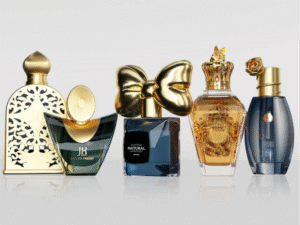In today’s competitive market, a unique and visually appealing product can significantly enhance brand image. Custom glass bottles and jars, with their myriad processing techniques, offer brands a way to stand out on the shelves. This article explores various glass processing methods and how customization can make your bottles and jars unique, boosting your brand’s presence.
1. Etching/Frosting
Etching or frosting involves using acid or sandblasting to create a frosted or matte finish on the glass surface. This process can produce intricate patterns and textures, giving the glass a sophisticated and premium look.

Advantages:
Elegance: Adds a touch of elegance and sophistication.
Customization: Allows for detailed and unique designs that reflect the brand’s identity.
Durability: The etched design is permanent and resistant to wear.
2.Screen printing
Screen printing applies ink directly to the glass surface through a mesh screen. This technique is ideal for adding colorful logos, labels, and designs.

Advantages:
Vibrant Colors: Achieves bright and vivid colors that stand out.
Versatility: Suitable for complex and multi-colored designs.
Cost-Effective: Economical for large production runs.
3.Decal
Decal application involves transferring a design onto the glass surface using a heat process. Decals can be highly detailed and include multiple colors, providing a versatile method for decoration.

Advantages:
Detailed Designs: Allows for intricate and multi-color patterns.
Flexibility: Can be used on various shapes and sizes.
Durability: Provides a long-lasting finish when properly applied.
4.Color Spraying
Color spraying is a technique where the glass surface is coated with a layer of paint or lacquer. This method can be used to create a wide range of colors and finishes, including matte, glossy, and frosted effects.

Advantages:
Color Variety: Offers a vast palette of colors and finishes.
Texture Options: Can create different textures, enhancing the tactile experience.
Protection: Adds an extra layer of protection to the glass surface.
5.Electroplating
Electroplating involves coating the glass surface with a thin layer of metal using an electric current. This technique creates a mirror-like finish and adds a modern, sleek look to the glass.

Advantages:
Modern Aesthetic: Provides a contemporary and stylish appearance.
Durability: The metallic coating is durable and long-lasting.
Versatility: Can be applied to various shapes and sizes of glass containers.
6.Sticker
Sticker application involves placing adhesive labels on the glass surface. Stickers can be easily customized and are cost-effective for small batches or promotional items.

Advantages:
Cost-Effective: Inexpensive and ideal for small production runs.
Customizable: Easily customizable with different designs and information.
Flexibility: Can be removed or replaced as needed.
Conclusion
Customizing glass bottles and jars through various processing techniques can significantly enhance your product’s visual appeal and elevate your brand image. Whether it’s the elegance of etching, the vibrant colors of screen printing, or the luxury of electroplating, each method offers unique benefits that can make your product stand out in the market.
Investing in customized glass packaging not only differentiates your brand but also adds value to your products, attracting discerning customers who appreciate quality and uniqueness. By leveraging these advanced processing techniques, you can create distinctive and memorable packaging that resonates with your brand’s identity and appeals to your target audience.
We hope this article provides insights into the various glass processing techniques and their benefits. If you have any questions or need further consultation on customizing your glass bottles and jars, please feel free to contact us. We are dedicated to helping you enhance your brand image through high-quality, custom glass packaging.



